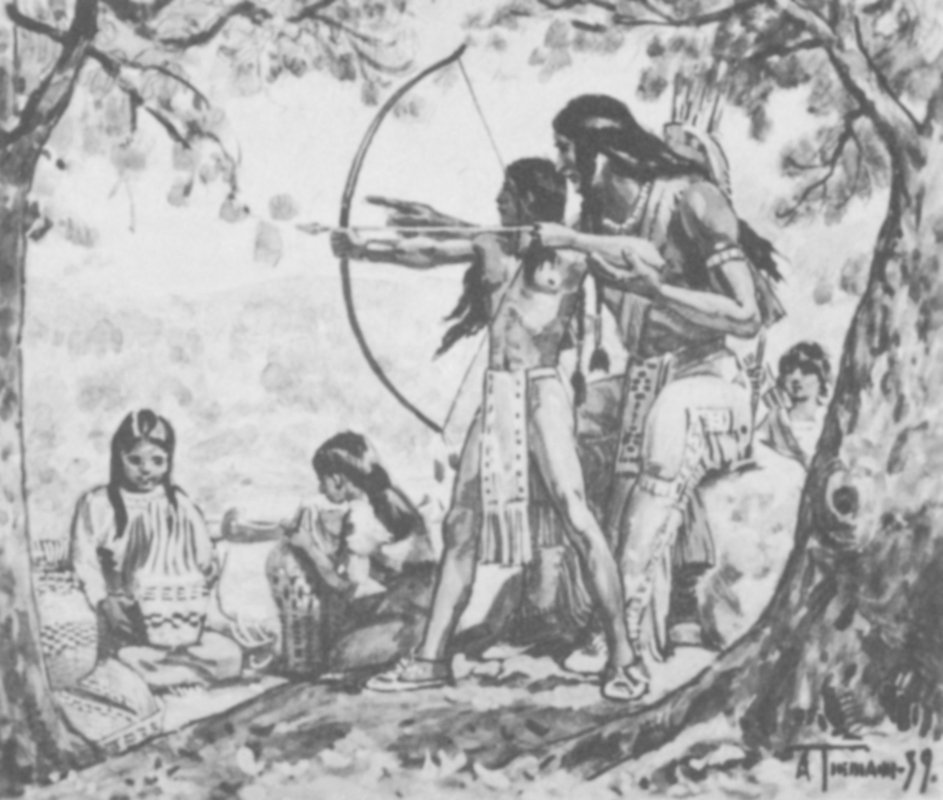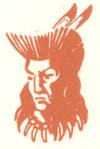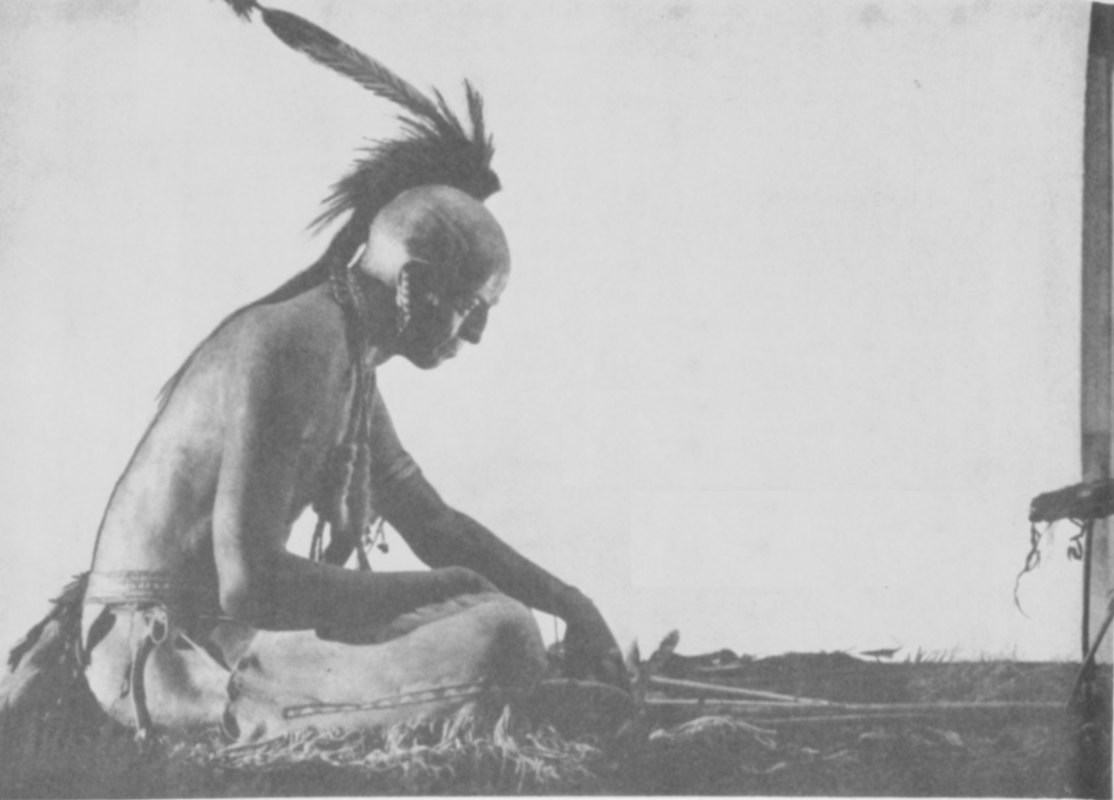

INDIAN YOUTH AT “SCHOOL” (PAINTING BY A. O. TIEMANN).
THE INDIANS
IN WISCONSIN’S HISTORY
BY JOHN M. DOUGLASS
The author, a member of the History Division of the MilwaukeePublic Museum, died January 26, 1951, shortly after completingthe manuscript of this handbook.

POPULAR SCIENCE HANDBOOK SERIES NO. 6
DESIGNED AND PRINTED AT
THE MILWAUKEE PUBLIC MUSEUM
PUBLISHED BY ORDER OF
THE BOARD OF TRUSTEES
MAY 1954
CHAPTER ONE
WISCONSIN’S INDIANS BEFORE THE COMING OF THE WHITE MAN

ROACH HEADDRESS (MUSEUM EXHIBIT).
It is difficult now to realize that Wisconsin, famed as a dairystate and rich in farm land and thriving communities, was once agreat wilderness. Before the land was cleared for the farmer’s plowand with its dense forests yet to hear the lumberjack’s axe, the thicktimberland of the north and even the rolling prairies of the central andsouthern portions of our state teemed with a great variety of wild life,including animals no longer occurring in Wisconsin, such as the woodlandcaribou, moose, elk, and buffalo or bison, as well as the more familiardeer, bear, and many smaller varieties.
Before the arrival of the Europeans, this Wisconsin wilderness was thehome of Indians who were wonderfully adapted to a life in the forests.They depended almost entirely on hunting and the gathering of naturalproducts for their food, shelter, clothing, tools, and weapons, althoughmost of them raised some garden crops such as corn, squash, beans, andpossibly tobacco.
Let’s pretend that we can travel backwards in time about 350 yearsand visit a typical Indian family of that period. As we arrive on thescene the tribe is preparing to set up a new camp. The women are busyunpacking their household gear, including reed mats used to cover theouter sides of the wigwam. The women themselves have carried the loadsduring the journey. This is not done because of any laziness on the partof the men, a common error of white observers, but simply because themen need their hands free to ward off a sudden enemy attack, or to killany game they might chance upon during the journey.
While the women unpack, the men enter the woods to cut poles forthe framework of the wigwams, and collect birch bark for the roofs. Afterthe poles are set into the ground to make an oval enclosure, they are bentand tied together at the top to form a rounded roof. The women then tieon the reed mats, and roof the hut with the rolls of bark. This is thetypical Wisconsin Indian winter lodge. Although it is the latter part ofMarch, the weather is still too cold to live comfortably in a summer lodge.
If we lift the bearskin covering the entrance and step into the lodge,we may see the simple furnishing